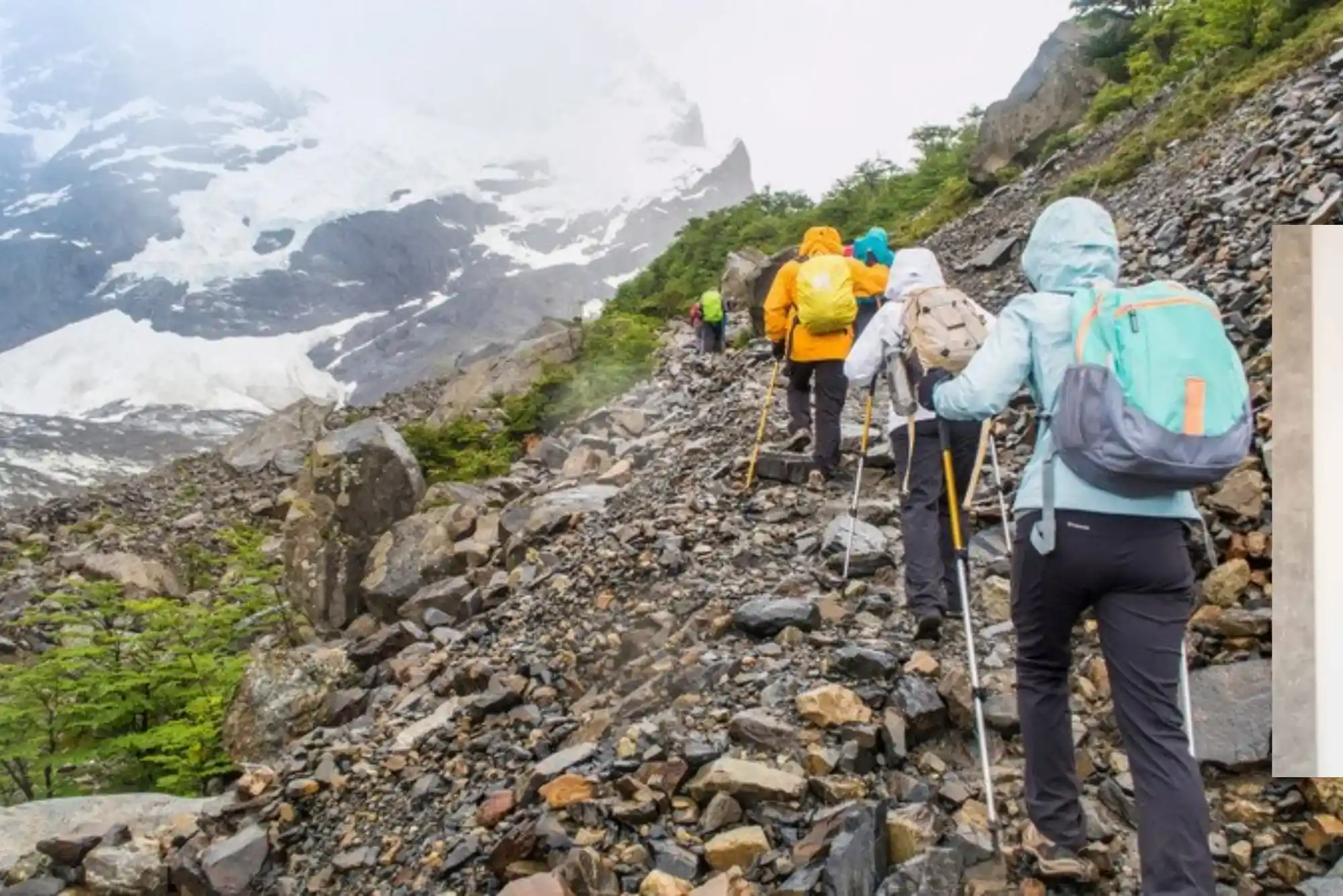Choosing the perfect trekking route in Nepal can seem daunting, as Nepal boasts vast array of options.
Nepal is renowned for its breathtaking landscapes, towering mountains, and rich cultural heritage, making it a top destination for adventurers.
Whether you are a novice trekker or an experienced hiker, Nepal has routes suited to all levels of experience and time constraints.
For beginners or those short on time, options like the Mardi Himal Trek or Ghorepani Poon Hill Trek are ideal.
Despite their shorter duration, these treks offer a chance to soak in the beauty of the Himalayas and immerse yourself in local culture.
If you’re up for a more challenging adventure and are physically fit, options like the Manaslu Circuit Trek or the Annapurna Circuit await.
These treks are renowned for their high-altitude trails and demanding terrain.
What’s so great about these treks is that prior trekking experience isn’t necessarily required, if you’re prepared for the physical demands and altitude.
The Everest Base Camp Trek offers stunning views of the world’s highest peak, while the Annapurna Circuit Trek takes you through diverse landscapes and cultures in the Annapurna region.
Both treks promise an unforgettable experience for those seeking a more rigorous and rewarding adventure in Nepal.
Nepal doesn’t compromise on adventure, whether you are embarking on a brief beginner-friendly trek or tackling a longer, high-altitude journey.
With Nepal’s diverse terrain, ranging from the world’s deepest gorge to the highest mountain peak, Mount Everest, there is a trekking route for everyone.
However, for first timers in Nepal, navigating these options can be overwhelming.
That is why we have put together this guide to help you on How to choose the right trek in Nepal?
Importance of choosing the right trek in Nepal:
Choosing the right trek in Nepal is important for many reasons.
Firstly, it directly impacts your overall trekking experience and safety.
Opting for a trek that matches your fitness level, interests, and goals ensures that you will fully enjoy the adventure without feeling overwhelmed or underwhelmed.
Moreover, selecting the appropriate region and the best season to trek significantly influences the landscapes you will encounter, and the weather conditions you will face.
This factor can truly make or break your trekking experience, as different regions offer varying scenery and climate conditions throughout the year.
Picking the perfect trek minimizes the risk of altitude-related illnesses.
By choosing a trek that suits your physical abilities and acclimatizing properly, you can safeguard your health and safety throughout the journey.
Being informed beforehand about the challenges you may encounter at higher altitudes allows you to prepare adequately and mitigate any potential risks.
Furthermore, selecting the right trek enables you to appreciate the cultural and natural wonders of Nepal while respecting the environment and local communities.
By choosing routes that prioritize sustainability and responsible tourism, you can contribute positively to the preservation of Nepal’s diverse ecosystems and support the livelihoods of local people.
Evaluate your fitness level and trekking experience:
When evaluating your personal fitness level and trekking experience for a Himalayan trek, it’s essential to consider the unique physical demands of such an adventure.
Trekking in the Himalayas involves navigating through rugged terrain, often with steep ascents and descents.
The altitude adds an extra layer of challenge, as the air becomes thinner at higher elevations, making breathing more difficult and exertion more taxing on the body.
Begin by honestly evaluating your fitness level and endurance.
Consider your past experiences with hiking or trekking, particularly in mountainous terrain.
If you have limited experience, you may want to start with shorter and less strenuous treks to build up your stamina gradually.
It’s also crucial to assess your overall health and any pre-existing medical conditions that may affect your ability to trek at high altitudes.
Higher altitude treks, such as those to Everest Base Camp or Annapurna Circuit, present greater physical challenges due to the reduced oxygen levels and potential altitude-related symptoms like altitude sickness.
Steep terrain adds another layer of difficulty, requiring strong leg muscles and cardiovascular endurance to ascend and descend safely.
Based on your assessment, choose a trek that aligns with your fitness level and endurance.
If you’re relatively fit and have prior trekking experience, you may feel comfortable tackling more challenging routes with higher altitudes and steep terrain.
However, if you’re new to trekking or have concerns about your fitness level, opt for shorter and less demanding treks that allow for gradual acclimatization and enjoyment of the Himalayan scenery without pushing your physical limits too far.
Ultimately, selecting a trek that matches your fitness level and experience will enhance your overall enjoyment and safety.
Research and learn about the different trekking regions in Nepal:
Before embarking on a trek in Nepal, it’s essential to research different trekking regions to find the one that best suits your interests and preferences.
Start by familiarizing yourself with popular trekking regions like Everest, Annapurna, and Langtang.
These regions offer a diverse range of trekking experiences, from iconic mountain vistas to cultural encounters with local communities.
Dive deeper into each region to learn about their unique landscapes, cultural experiences, and attractions.
For example, the Everest region is famous for its stunning views of Mount Everest and the Sherpa culture, while the Annapurna region offers a variety of trekking routes through lush forests, terraced fields, traditional villages and iconic sunrise and sunsets.
Understand the logistics involved in trekking in each region, including transportation options and accommodation availability.
Consider how you will access the starting point of your trek, whether it’s by flight, bus, or jeep.
Research the types of accommodation available along the trekking routes, such as tea houses, lodges, or camping sites, and make sure they meet your preferences and budget.
By thoroughly researching different trekking regions in Nepal, you can make an informed decision and choose the one that aligns with your interests, preferences, and logistical considerations.
Consider the best trekking season:
It is crucial to consider the best trekking season to ensure an enjoyable and safe experience when planning to trek in Nepal.
Nepal experiences four distinct seasons: spring (March to May), summer/monsoon (June to August), autumn (September to November), and winter (December to February).
Each season offers different weather conditions and trekking experiences. Learn and familiarize yourself with Nepal’s seasons and weather patterns.
Choose a trekking season that aligns with your preferences and interests.
For example, if you enjoy mild temperatures and blooming rhododendron flowers, spring is an ideal season for trekking.
If you prefer clear skies and panoramic mountain views, autumn is considered the best season for trekking in Nepal.
Consider factors such as visibility, trail conditions, and crowd levels during different seasons.
Spring and autumn generally offer the best visibility and trail conditions, with clear skies and stable weather. However, these seasons also tend to be more crowded, especially in popular trekking regions like Everest and Annapurna.
On the other hand, the summer/monsoon season brings heavy rainfall and leeches on the trails but offers lush green landscapes and fewer crowds.
Winter brings cold temperatures and snowfall at higher elevations, but lower-altitude treks can still be enjoyable with fewer tourists.
Read reviews and seek recommendations:
Reading reviews and seeking recommendations can provide valuable insights to help you make informed decisions if you are planning to trek in Nepal.
Reach out to experienced trekkers, travel agencies specializing in Nepal treks, or online forums dedicated to trekking.
These sources can offer valuable recommendations based on firsthand experiences and knowledge of the region.
Experienced trekkers can provide insights into their favorite routes, while travel agencies can suggest tailored itineraries based on your preferences and requirements.
Take the time to read reviews and testimonials from fellow trekkers who have completed similar routes.
Blogs, and social media platforms and websites like Trip Advisors often feature details of trekking experiences, including trail conditions, accommodations, and overall impressions.
Pay attention to both positive and negative feedback to gain a comprehensive understanding of what to expect during your chosen trek.
When selecting local guides or trekking agencies, consider their reputation and expertise in the field.
Look for agencies with a proven track record of organizing safe and well-planned treks, as well as guides who are knowledgeable about the local culture, environment, and safety protocols.
Learn about altitude and Acclimatization:
When it comes to trekking, altitude and acclimatization is a very crucial topic which you should learn about.
Consider the maximum altitude of the trekking route you’re considering.
Many popular treks in Nepal, such as Everest Base Camp and Annapurna Circuit, reach altitudes above 5,000 meters (16,400 feet).
Higher altitudes increase the risk of altitude sickness, so it is important to be aware of the elevation gain along your chosen route.
Understand the need for gradual acclimatization to prevent altitude sickness.
Acute Mountain Sickness (AMS) can occur when ascending too quickly to high altitudes, as the body needs time to adjust to the reduced oxygen levels.
Symptoms of AMS include headaches, nausea, dizziness, and fatigue.
To minimize the risk of AMS, it is essential to ascend gradually and allow your body time to acclimatize to the altitude.
Choose a route that incorporates proper acclimatization days and altitude gain strategies. Look for treks with a gradual ascent profile and built-in rest days at higher elevations to allow for acclimatization.
Safety considerations:
When planning a trek in Nepal, safety should be a top priority.
Prioritize safety by selecting well-established and popular trekking routes.
These routes are frequently traveled, making them safer in terms of trail conditions, accommodation options, and access to assistance if needed.
Popular routes often have better infrastructure and support services available along the way.
Before embarking on your trek, check the availability of emergency services and evacuation options along your chosen route.
Familiarize yourself with the locations of medical facilities, rescue centers, and emergency contact numbers.
It is also advisable to carry a basic first aid kit and know how to use it in case of minor injuries or medical emergencies.
Permit and fee requirements:
It is important to research and understand the permits and fees required for your chosen trekking route in Nepal.
Different trekking regions in Nepal have different permit requirements, and some areas may require multiple permits.
Common permits include the Trekker’s Information Management System (TIMS) card and the Annapurna Conservation Area Permit (ACAP) or Sagarmatha National Park Permit for Everest region treks.
Familiarize yourself with the permit regulations and procedures, including the required documents and application process.
Some permits can be obtained in advance through authorized agencies or online portals, while others may need to be obtained locally upon arrival in Nepal.
Make sure to check the validity period of permits and any restrictions on trekking routes.
Budget for the permit fees associated with your trek and ensure compliance with local regulations.
Permit fees can vary depending on the trekking region and the duration of your trek.
It is essential to factor these fees into your overall trekking budget to avoid any last-minute surprises.
Carry the necessary identification documents such as a passport and passport-sized photos for permit applications.
Travel is the ultimate way to explore the world, discover new cultures, and create unforgettable memories. At Look Me, we bring you the best travel experiences tailored to your dreams. Whether you’re seeking serene beaches, bustling cities, or tranquil mountain escapes, our expert guides and resources make your journey seamless. With tips on planning, destinations, and unique travel ideas, Look Me ensures your adventures are nothing short of extraordinary.
Dive into our curated itineraries, find budget-friendly deals, and embrace the joy of exploring the unknown. From solo wanderers to family vacations, our platform caters to all types of travelers, helping you make the most of your time and budget. At Look Me, we believe every trip is a story waiting to be written, and we’re here to make yours exceptional. Start your next adventure today and see the world like never before!




